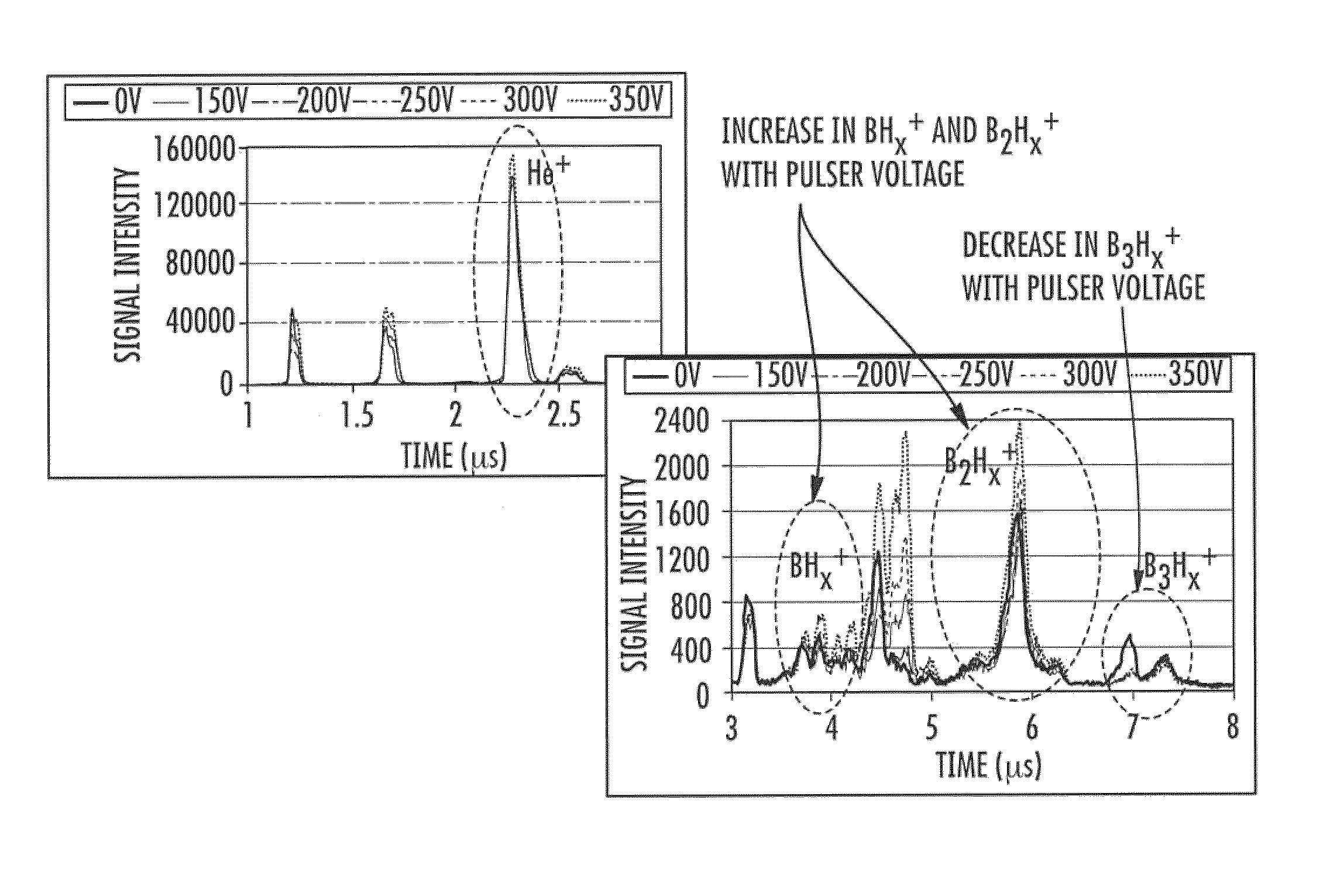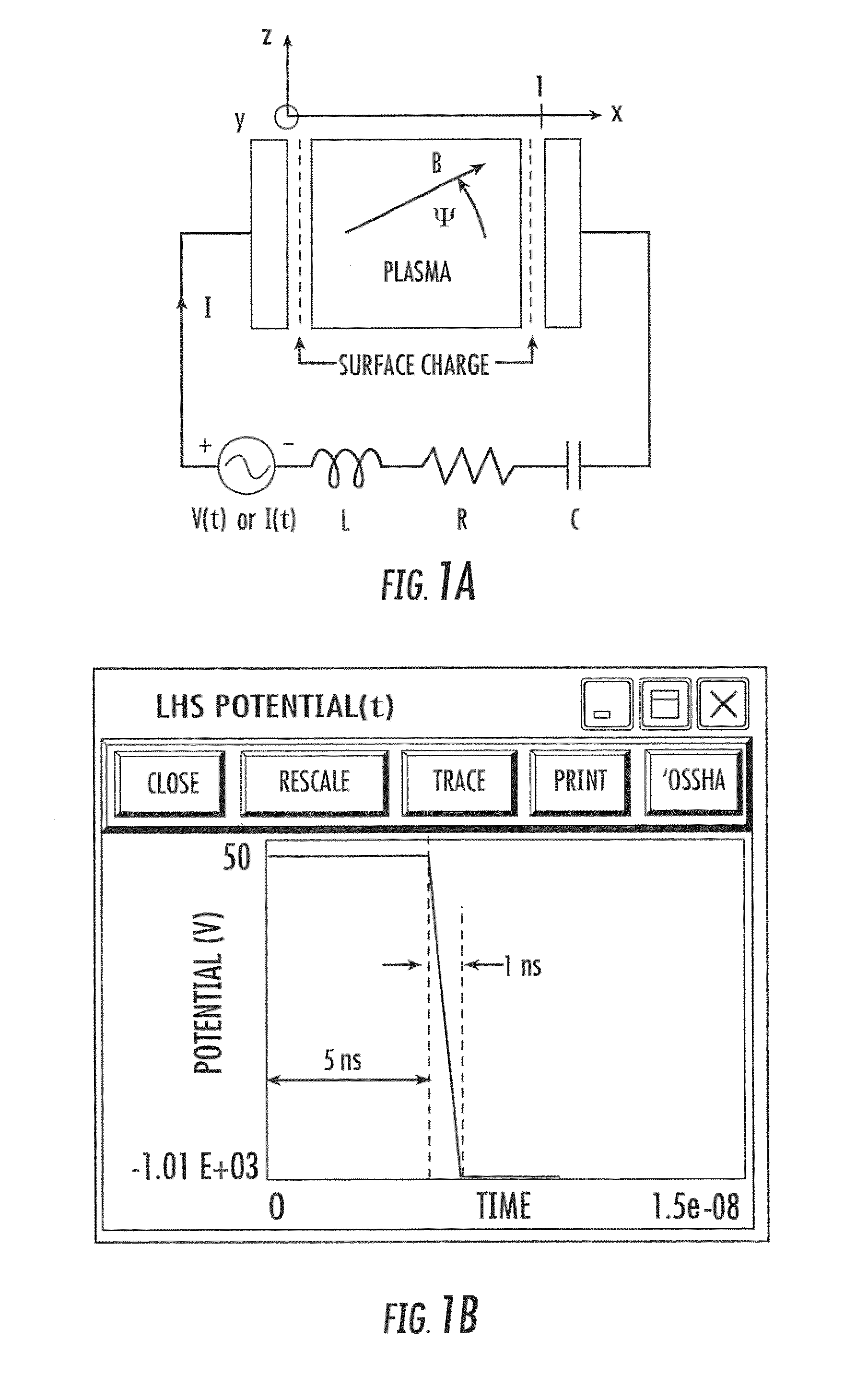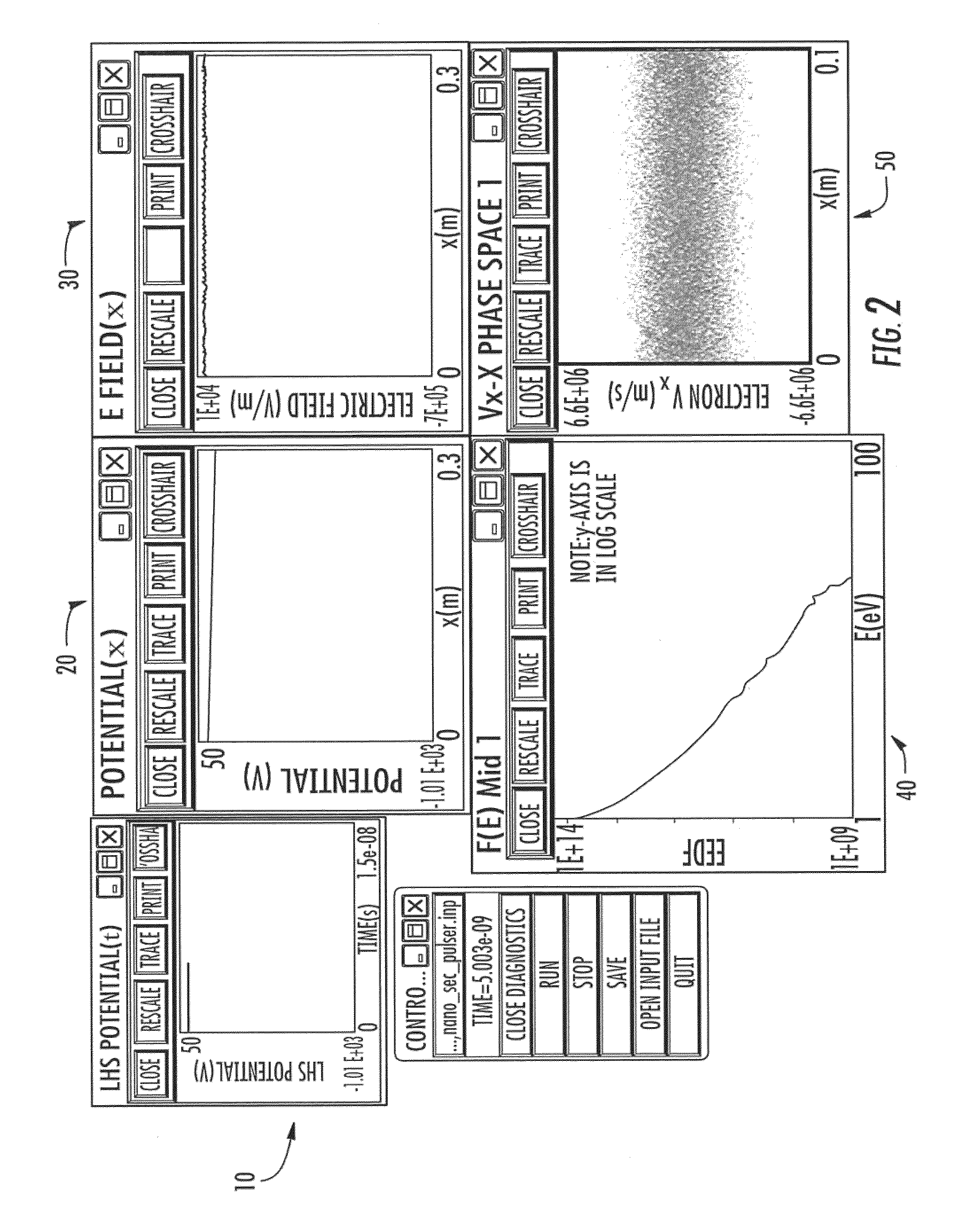System and method for selectively controlling ion composition of ion sources
a technology of selective control and ion source, which is applied in the field ofplasma generation, can solve the problems of too short to significantly affect the ions, and achieve the effects of less deposition, higher ionization to dissociation ratio of molecules, and less deposition
- Summary
- Abstract
- Description
- Claims
- Application Information
AI Technical Summary
Benefits of technology
Problems solved by technology
Method used
Image
Examples
example 1
[0064]In the following, results from experiments performed on a plasma doping (PLAD) tool are presented. Referring to FIG. 10, variation in ion fractionation is illustrated as a function of peak applied voltage on the nano-pulser. Fractionation refers to which ion is being made in the plasma (i.e., if you take diborane, you might be making B2H5+, or B2H4+). It can be seen from FIG. 10 that, for example, as the voltage pulse increases in magnitude (as applied on the nano-pulser), the relative fraction of He+ ions (i.e., the concentration) goes down, while the H+ concentration (among others) goes up. Thus, by varying the voltage of the nano-pulser, the user can tailor the production of ions of interest to suit a particular process.
[0065]FIG. 11 illustrates the effect that changes in the pulse voltage has on produced ion concentration. FIG. 11 is a graph of time-of-flight (TOF) spectra for 0.1% B2H6 (in He) plasma as a function of pulser voltage. In this illustration, the production of...
PUM
| Property | Measurement | Unit |
|---|---|---|
| aspect ratio | aaaaa | aaaaa |
| aspect ratio | aaaaa | aaaaa |
| pressure | aaaaa | aaaaa |
Abstract
Description
Claims
Application Information
 Login to View More
Login to View More - R&D
- Intellectual Property
- Life Sciences
- Materials
- Tech Scout
- Unparalleled Data Quality
- Higher Quality Content
- 60% Fewer Hallucinations
Browse by: Latest US Patents, China's latest patents, Technical Efficacy Thesaurus, Application Domain, Technology Topic, Popular Technical Reports.
© 2025 PatSnap. All rights reserved.Legal|Privacy policy|Modern Slavery Act Transparency Statement|Sitemap|About US| Contact US: help@patsnap.com



